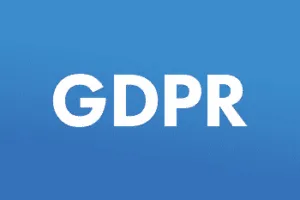With supply chains becoming larger and more complex, it is becoming more difficult to improve service through a reduced order-cycle time while enhancing inventory availability and reducing operating costs at the same time. Big data is revolutionizing the optimization of supply chain and inventory management by improving visibility. It is telling a compelling story that is making leaders listen. Companies that have adopted supply chain predictive analytics see up to a 50% reduction in non-performing inventory and a 25% reduction in inventory holding costs, thus freeing up working capital.
Predictive analysis uses several techniques that include statistics, data mining and artificial intelligence, along with continuous machine learning, to make predictions on data that is both historical and current. This software is providing deep insights into inventory and supply chain management that has a far-reaching impact on efficiency.
Supply Chain Predictive Analytics in Demand Forecasting
Demand forecasting helps you to know how much inventory you need to stock up on to meet current and future customer demand. It analyzes past data as well as future events to come up with a prediction model that walks the tightrope between underestimating the demand and overestimating supplies. While underestimating can lead to a loss in sales, overestimating can cause a surplus and become a financial drain.
These patterns need to factor in promotional events that can see a sales boost that might not be sustainable. This brings us to a fact rarely highlighted, that accurate data mining is only as good as the data it works on. Any error or anomaly in the data used can create faulty forecast models. So data preparation is key when evaluating suitable predictive software and its application. A good demand forecast model usually is an ensemble of many different models working together to improve predictive accuracy; if one model throws up a different result, it gets counteracted by the other models.
The benefits of demand forecasting are easily evident by
- Accurate stock availability, which leads to lowered spending
- Reduction in need for clearance sales.
- Improved efficiency in employee scheduling and warehouse operations.
- Knowledge of market trends, so businesses can evolve strategies that keep them ahead.
Reducing the Cost of Carrying Inventory
Inventory costs are one of the biggest concerns of any business. Even with the best inventory control procedures, numbers that can be worrying still sometimes show up on cost reports. Carrying costs of stock that have not yet been sold or shipped contribute to almost 30% of total inventory costs each year. The costs arise as a result of 3 heads…
- Holding Costs: This relates to the rent, utility charges, taxes and space required to store the inventory.
- Handling Costs: This is the labor involved in moving, packing and organizing the inventory to make space.
- Capital Costs: This is usually a loss in opportunity as it reduces the availability of capital to build the business
While carrying costs cannot be wiped out, a reduction itself will see a big impact. Predictive analytic tools can help businesses to know when their re-order point will arise. It also gives insight into how they can future-proof business decisions. Small businesses, in particular, find this a big positive when they are considering supply chain predictive analytics as a business investment.
Increased Customer Satisfaction Levels
Whether you are a retailer or distributor moving finished products or a manufacturer with your inventory comprised of a series of integral parts, customer service is still a key factor. Having access to real-time customer demand patterns and historical data through a cloud-based management system translates to lower costs while matching inventory levels with predicted customer demands. An impressive benefit of predictive analysis is the ability to aggregate data from unrelated sources and make them work together. It can predict spikes and depressions that will help match customer demand with inventory without resorting to carrying inventory for longer periods.
If you have not yet employed predictive analytics in your business strategy, it might be time now to speak to a professional to understand better how it can streamline your operations. Reach out to the team at 7T today. Our data governance tool, Sertics, can help your business identify inefficiencies and improve your bottom line.










